PROTECT YOUR DNA WITH QUANTUM TECHNOLOGY
Orgo-Life the new way to the future Advertising by AdpathwayBromeliads are fascinating plants in the Bromeliaceae family, which also includes pineapples and tillandsia, or air plants. While some plants in this family are terrestrial, like pineapples, the ones we typically call bromeliads are epiphytes. This interesting difference affects one particular aspect of care more than others, making their watering needs unique.
Their unique growth habit and flamboyant flower stems make them a fascination in the world of houseplants. They have an exotic flair that has few rivals. Between their bold blooms and broad, waxy foliage, they are quite eye-catching.
These cool epiphytes are not difficult to cultivate. If you have a basic understanding of how they grow in nature, they are almost carefree. They love humidity, warm temperatures, and bright but indirect light. Let’s talk about that other all-important care habit: how much and how often to water these beauties.
What is an Epiphyte?
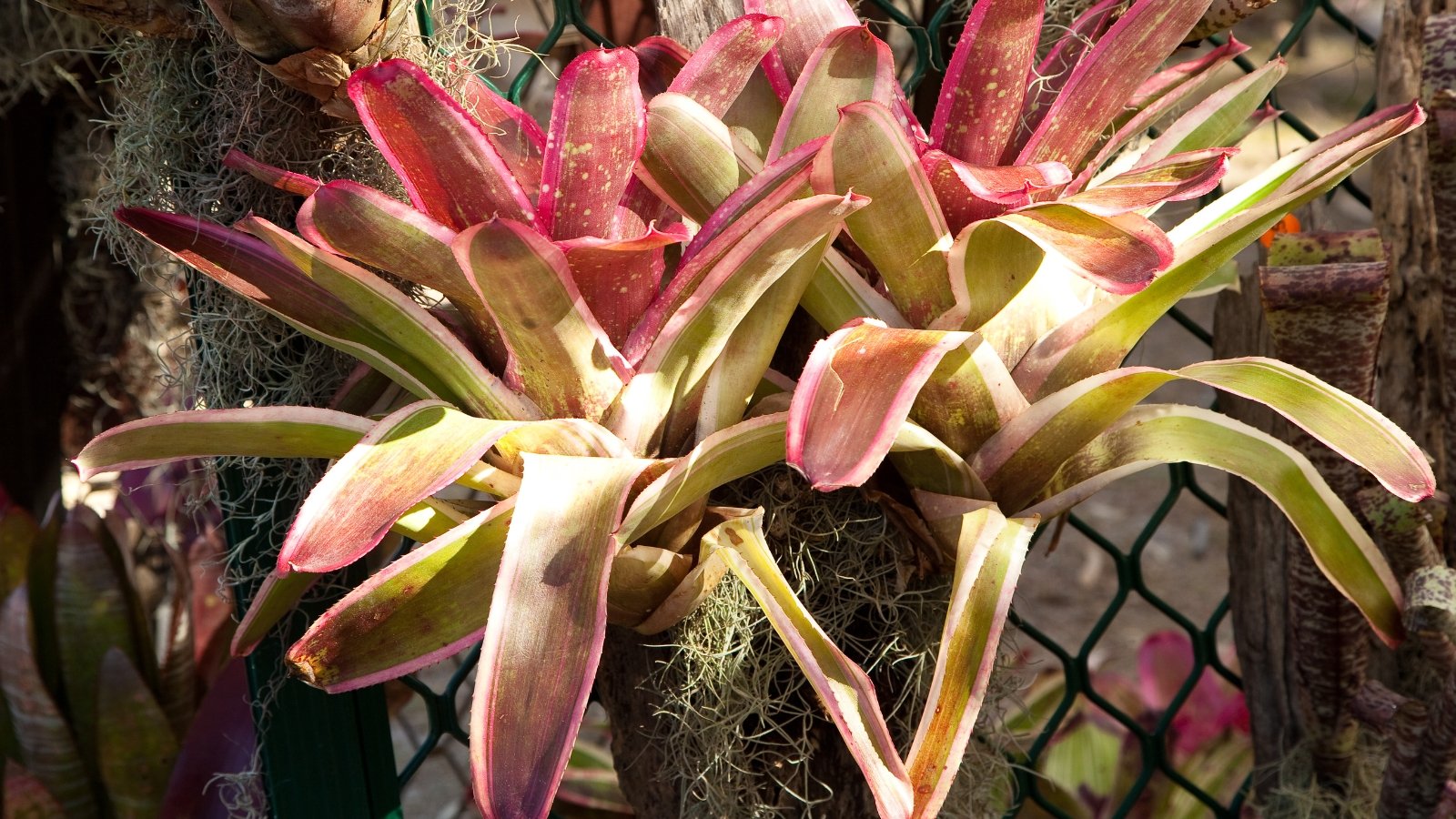 Epiphytes are air plants growing on trees, absorbing moisture through roots without needing soil.
Epiphytes are air plants growing on trees, absorbing moisture through roots without needing soil.Most bromeliads are epiphytic, so we will focus on that type of plant. A few, like pineapples, are terrestrial, and those have some differences in their care needs. Terrestrial plants process moisture differently.
Epiphytes are essentially air plants. They grow attached to trees or other plants. Their roots grow non-parasitically around their host without the presence of soil. Naturally, this makes watering bromeliads different from irrigating terrestrial plants. When we deal with a terrestrial plant, the soil absorbs some moisture, and the plant takes it in over time through the roots.
For epiphytes, roots have a different purpose. They predominantly serve as anchors to their hosts. Since they have no soil to draw from, their leaves are responsible for moisture and nutrient uptake. Most bromeliads have a similar form: a rosette of stiff, flattened leaves that produce a colorful inflorescence in the center.
* A note on flowers: Bromeliads typically have small, insignificant flowers. They produce large, colorful bracts that house these small flowers. The bracts are the showy, flamboyant parts that we commonly associate with blooming.

Potting Correctly
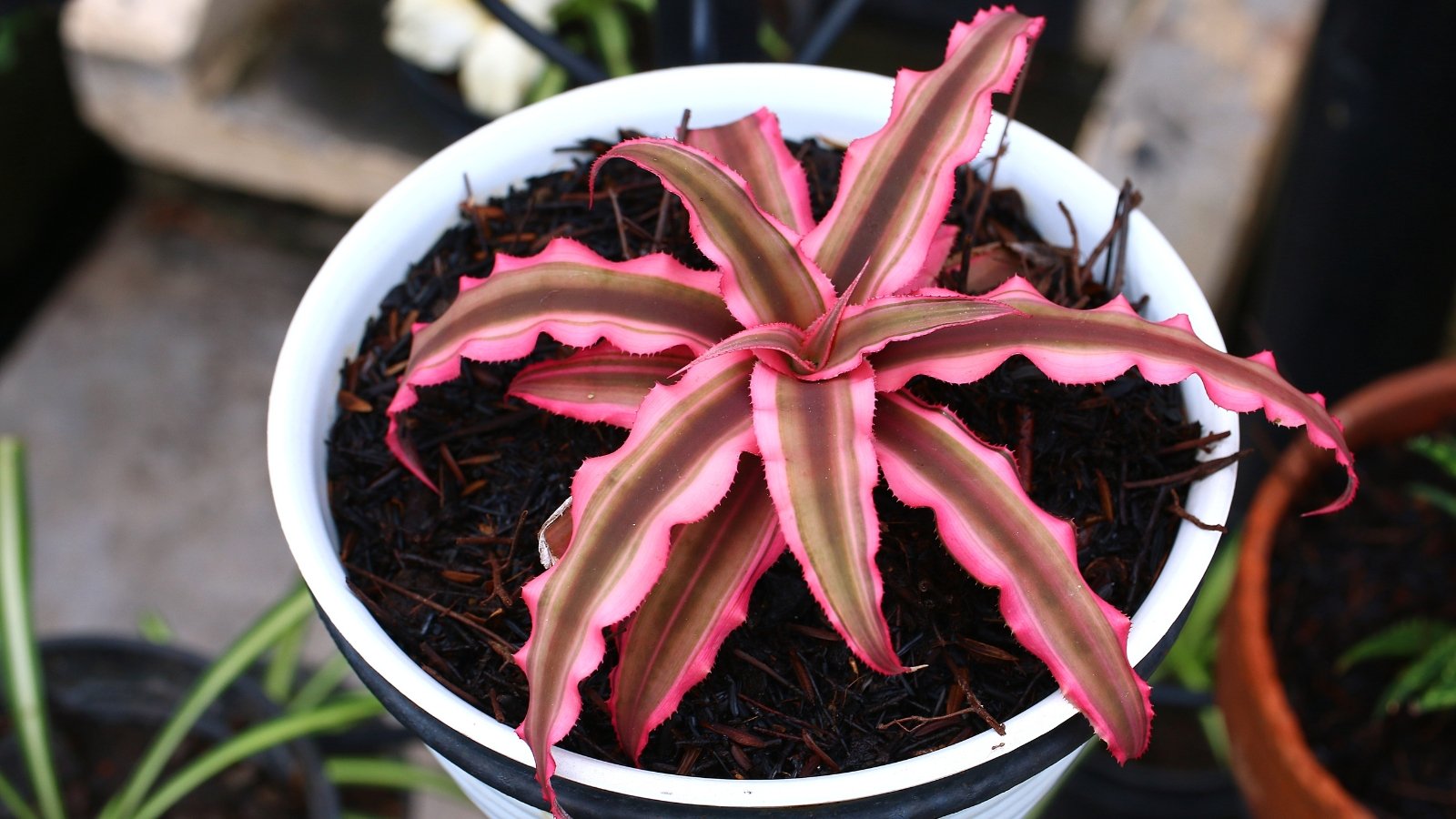 Choose a container with great drainage and a light, airy mix like orchid bark.
Choose a container with great drainage and a light, airy mix like orchid bark.Because bromeliads grow epiphytically in nature, their roots aren’t well-suited for standard pots and potting soils. They are similar to orchids in this way. Those roots that aren’t accustomed to soil need a lot of air circulation to stay healthy. They are prone to root rot when kept in a constantly moist or soggy environment.
Choose a container that has excellent drainage. If you have your heart set on a decorative pot with no drainage holes, you can simply leave your plant in a plastic pot with drainage holes and remove it to water it. Avoid letting the liquid pool at the bottom, as you may end up with fungus growing in there.
In addition to the container, drainage is important when it comes to potting material. Standard potting mix holds too much moisture and stifles the roots. Instead, choose a light, airy mix with coarse materials. Orchid bark makes a good potting mix for bromeliads.
How to Do It
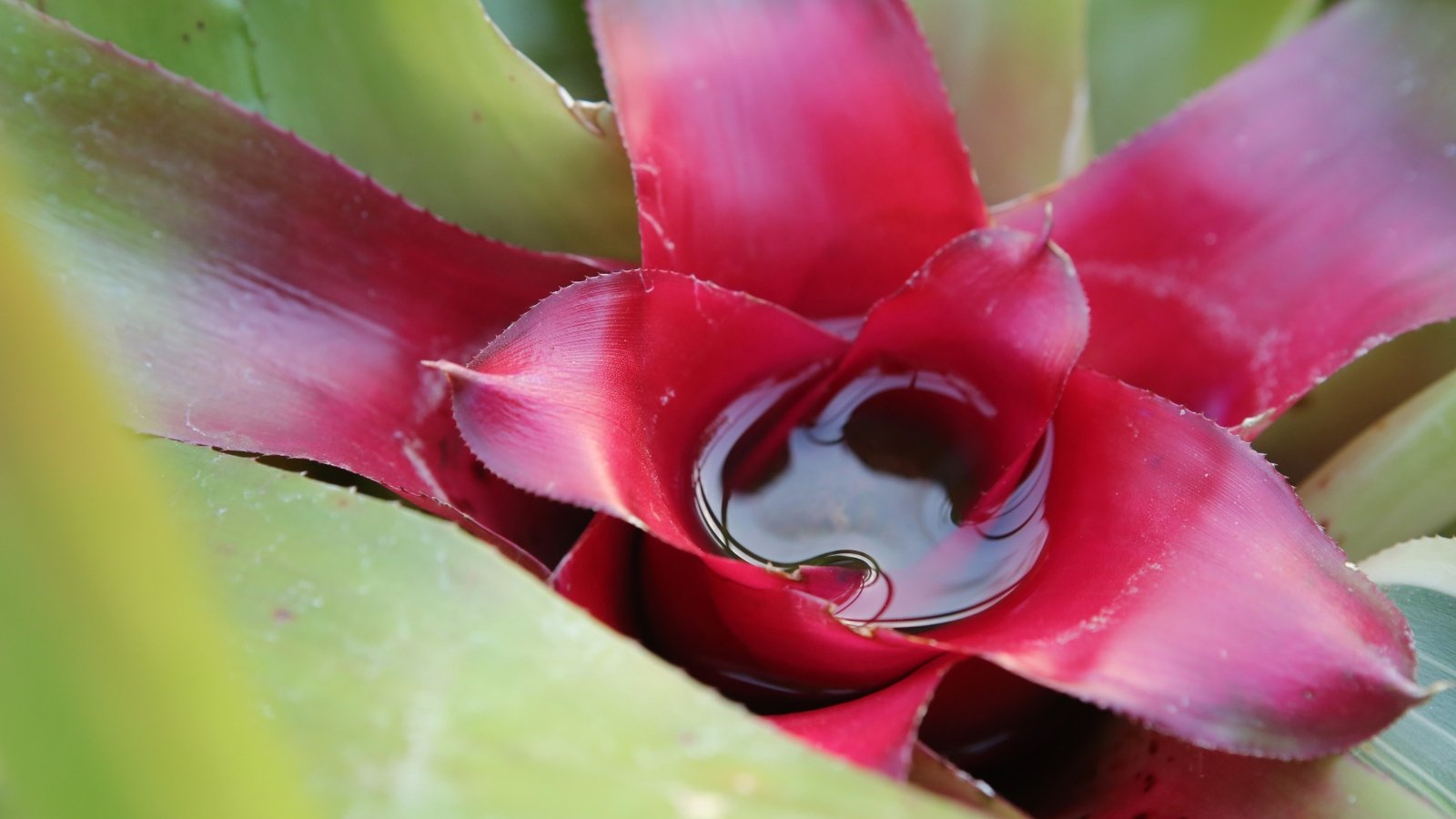 Fill the center reservoir about halfway when watering to keep it moist without causing stagnation.
Fill the center reservoir about halfway when watering to keep it moist without causing stagnation.Bromeliads are adapted to living in trees where rain is sometimes scarce. They are well-equipped for these conditions with what we call a ‘tank.’ This is a special reservoir in the base of the rosette of leaves that holds liquid for a long period. It gradually supplies the plant with moisture and conserves what it doesn’t need during drought.
For many epiphytes, watering is more complicated. Orchids prefer roots periodically soaked in water and fertilizer, but getting water in the crown can be deadly. Not so for bromeliads. They prefer water poured directly into their tank, where they can reserve it for when they need it.
Water quality is important to these plants; tap water can contain chemicals and minerals that overburden them. Rainwater is best, but filtered or bottled water works well, too. If you use tap water, allow it to sit out overnight so that the chlorine evaporates.
When you do so, pour water directly into the tank. This is the most natural way to care for your plant and the way it behaves in nature. Fill it about one-quarter to one-half of the way full to prevent stagnation.
Frequency
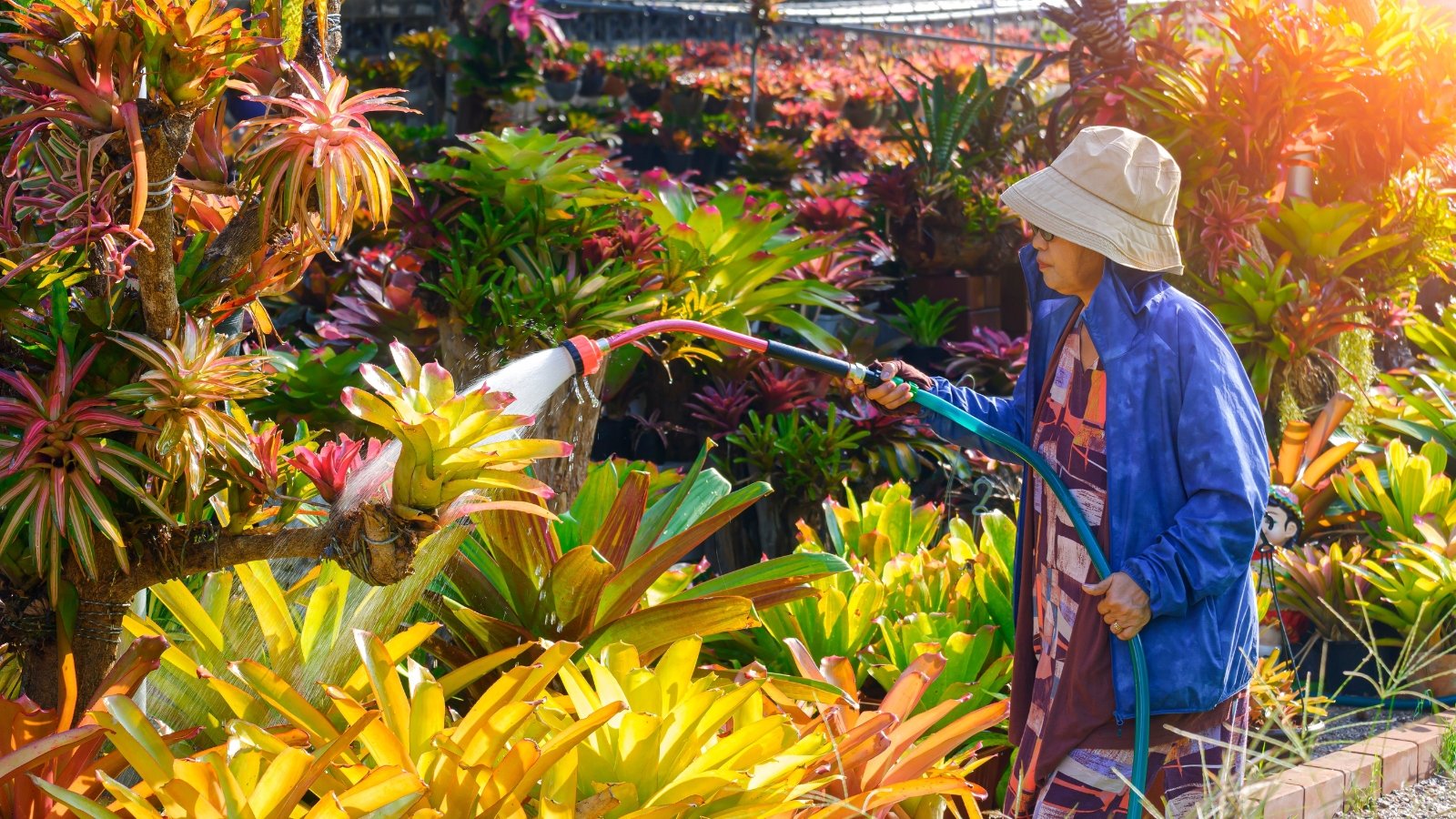 Avoid letting water sit too long in the reservoir to prevent fungus and crown rot.
Avoid letting water sit too long in the reservoir to prevent fungus and crown rot.While their tank makes these epiphytes drought-tolerant, putting this stress on yours is unnecessary. It’s also important not to allow water to stagnate in the tank. Fungus can form in standing water, rotting the crown and killing your bromeliad.
During warmer months, don’t wait more than two weeks between waterings. If there is remaining liquid in the tank, empty it out and refresh it. This will go a long way toward preventing fungal diseases.
In the winter, your plant will need less moisture overall. During this time, only fill the tank about one-quarter full. You can wait three weeks between waterings and allow it to dry on its own. If you find you regularly dumping a lot of liquid, reduce the amount you give.
Signs of Over and Underwatering
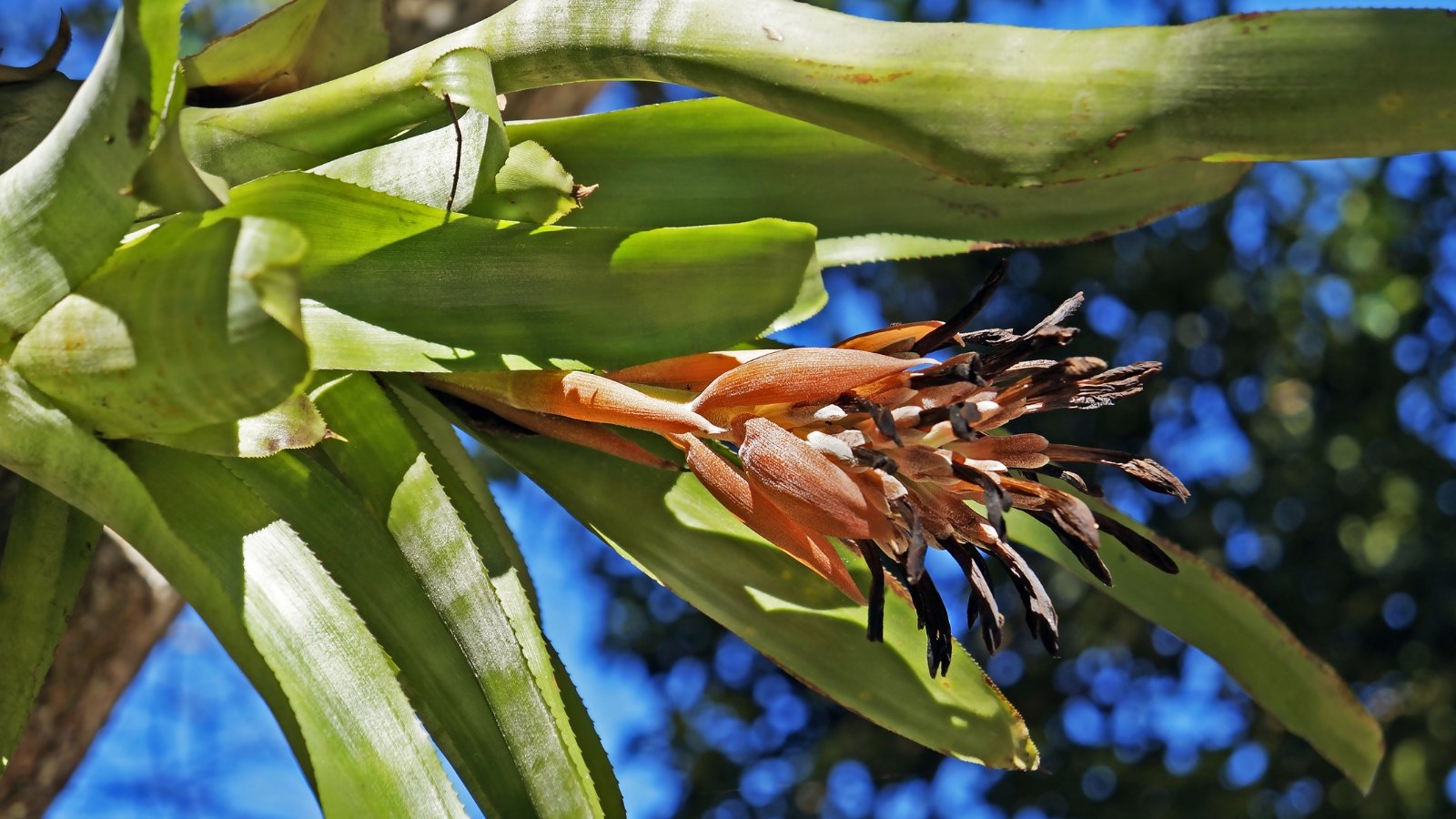 Yellowing leaves signal overwatering, while a dark, mushy center usually means serious crown rot.
Yellowing leaves signal overwatering, while a dark, mushy center usually means serious crown rot.When it comes to moisture, overdoing it is more of a concern than letting your plant dry out in terms of long-term effects. A plant that isn’t getting enough moisture may have drooping or wilted foliage. Brown, crispy tips are a sign of dryness, but this can be as much about humidity as anything else.
Bromeliads are tropical forest plants that are accustomed to humidity and warm temperatures. A bathroom is the perfect location to keep them indoors. This is another way that they are similar to orchids. If there is liquid in the tank and your leaves still look dry, it could be an issue with humidity. Most of the time, they will bounce back from being too dry for a time.
Overwatering, on the other hand, can be deadly. If you find yourself consistently pouring off liquid from the tank, you should scale back on the amount you put in there. Too much liquid sitting in that tank can begin to grow mold and other harmful pathogens.
Signs that your bromeliad is over-saturated are obvious in the condition of the leaves. Yellowing and soft leaves are a sign of root rot. If the center of the plant begins to turn dark and mushy, you’ve got a more serious case of crown rot. It’s difficult for them to recover from that.
To avoid this situation, keep an eye on the leaves and practice good watering habits. Check every one to two weeks, try to add just enough to last this long, and flush the tank any time you water. This will keep your crown fresh, hydrated, and free of harmful fungus.


 3 months ago
34
3 months ago
34





















 English (US) ·
English (US) ·  French (CA) ·
French (CA) ·